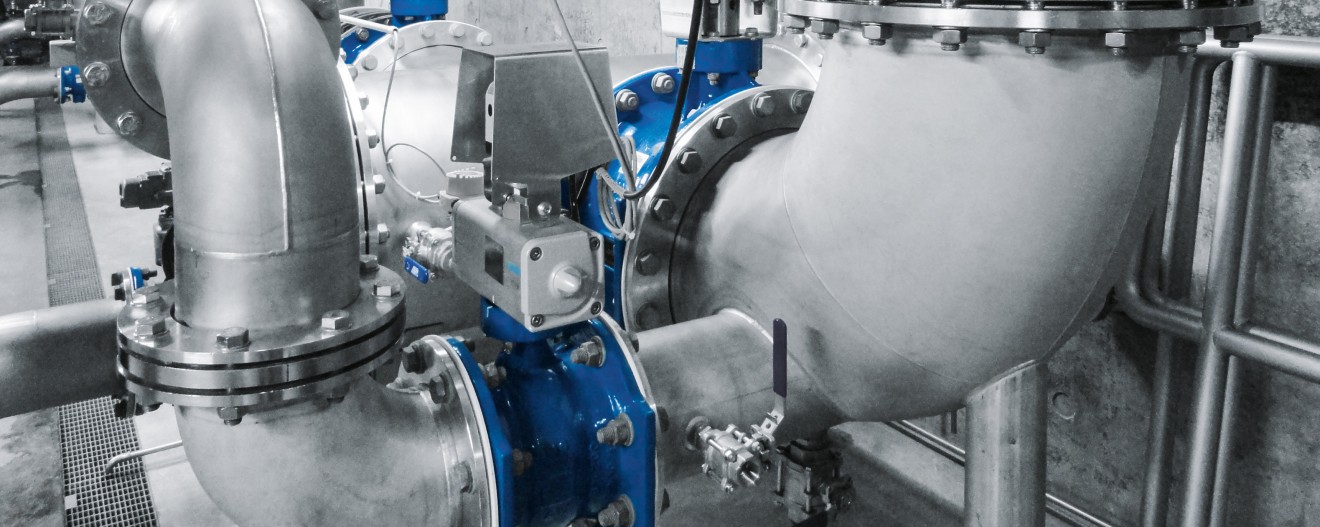If you haven't got a clue about what pneumatics are and how a pneumatic system works, make sure you check out the "Introduction to Pneumatics" post here as we'll be diving deeper into one of the major components that make up a pneumatic machine- Pneumatic Actuators in this article.
Everybody encounters an actuator at least once a day at home, at work or just out and about.
We've mentioned pneumatic actuators in our previous blog, but only very briefly. Indeed, actuators provide a movement within a system either in a linear or rotary motion. They can be powered by hydraulics (water pressure), a hand-wheel, electronics or pneumatics (air pressure).
Here at SLS we want to make sure you’re accessing the right products for your needs, be it industrially or for the home environment. Today we will be focusing on the pneumatic actuator (or, also referred to as the pneumatic system). And, while you may be able to simply find a pneumatic actuator in Singapore, we’re here to provide you with the information, benefits and usage of them.
What is the Primary Function of a Pneumatic Actuator?
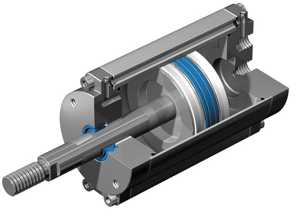 Sectional view of a pnumatic linear actuator
Sectional view of a pnumatic linear actuator
A pneumatic actuator, unlike the other ways to power an actuator, is primarily used to power a valve within a system. They convert pressurized air into energy to keep a system operating smoothly. This can be for gas, load or water movement.
The pneumatic actuator is commonly found within a cylinder or a motor in order to open or close something. Due to their strength and durability, the pneumatic actuators are commonly used within industrial valves.
There are three types of pneumatic actuators that will be used in different circumstances;
- Single-acting cylinder pressured
Air will enter and be expelled from a single port at the cap end and the piston end will feature a spring. This is best for heavy lifting or moving something in one direction.
- Double-acting cylinder
This type of actuator allows for pressurized air to enter and be expelled through two end ports; the cap and piston. One is activated to open the valve, and the other will be activated to close the valve. Therefore, this makes for the best option when needing to move something back.
- Pneumatic rotary device
A motor that operates average speeds around 10,000 rpm. Due to the compressed air that is operating the motor, the pneumatic actuator is restricted to a low-moderate torque. These are primarily used on sites where building is taking place; for a consistent movement such as mixing or oscillating.
Why Do We Use Pneumatic Actuators?
There are many benefits to using pneumatic actuators due to their supply of energy. Because they use air to operate the system, they are a simple design and have very high safety ratings in comparison to their counterparts; hydraulic and electronic.
The pneumatic actuator can be triggered manually, through pressure or through temperature changes; for example, when a machine is overheating, it will heat the air in the compressed chamber and cause the air particles to expand thus setting off the actuator and causing a valve movement. This way, the actuator is automatic which can be useful on industrial sites needing to be temperature-controlled.
As there are so many, here are the main benefits to using a pneumatic actuator as they are:
More economical
Electric actuators use a lot of energy, which they either loose as excess heat or require for the gearboxes. On the other hand, pneumatic actuators act directly on the shut-off device. Pistons and an actuator shaft are sufficient for the conversion of the linear compressed air force into a swivel motion. As compared to electric actuators, pneumatic solutions are more economical as they only need power for the generation of compressed air and for open-loop control. Actual movement is created through the compressed air.
Durable and low maintenance
For years, pneumatic actuators have proven to be resistant to vibration and to be durable as they are made from a small number of components and are thus less likely to break down. In addition, they are also resistant to continuous loads and remain maintenance-free over their entire service life. Oil changes or additional lubrication are unnecessary.
Since pneumatic actuators have overload protection and a higher actuation force can be achieved very simply by increasing the pressure, it is often possible to use smaller sizes with a lower weight. Pneumatic systems are able to deliver high forces of up to 50,000 N and torques of up to 10,000 Nm.
Fail safe
Pneumatic actuators are safe as there are no environmental hazards from liquid leaks or sparks. Compressed air is also available in the event of a power failure. Alongside a compressor for generation and treatment purposes, an air reservoir is always available for emergencies. Furthermore, being overload-proof and explosion-proof also mean that they also used in fail-safe, extreme environments and critical applications without compromising performance and safety.
In addition to the benefits stated above, pneumatic actuator also provide other advantages:
- They can withstand high temperatures
- They have no magnetic interference
- They are lightweight as there is no liquid
- They offer high precision-control positioning and accuracy in linear motion
- They are quieter than other actuators such as hydraulic
So, having a pneumatic system instead of an electric or hydraulic system proves to be a more economic, hassle-free and safe option for all applications. They are also reliable for long periods of time.
But, before you head to SLS to find a pneumatic actuator in Singapore, you’ll also need to know that there are some limitations.
What are the Limitations of Using a Pneumatic System?
Pneumatic systems are not for every application. There are industries and areas where an electric or – safer – hydraulic actuator would provide a bigger benefit due to speeds.
For a pneumatic actuator to be at its most efficient, it must be sized and fitted to the job. Meaning there could be more costs involved.
Often, specific jobs require high-speed valve or object movement rather than slow-paced. In these situations, hydraulic presser is a preferred energy. This is because compressed air can also experience leaks and losses causing the actuator to have a lower pressure and a slower force.
Not only this, but the compressed air can become mixed with other compartments to the cylinder such as lubricants or oils, making the compression function at slower speeds. This is one of the reasons why you need to research into the brand and use providers such as SLS in Singapore to point you in the right direction.
So, even though pneumatic pressure has its many positives, make sure that the actuator is right for your needs.
Which Industries Are Likely to Use the Pneumatic Actuator?
With this, there are many industries across the globe that will use pneumatic actuators to power their everyday essentials.
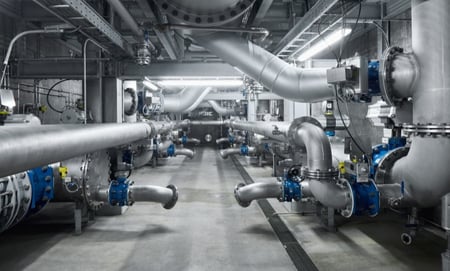
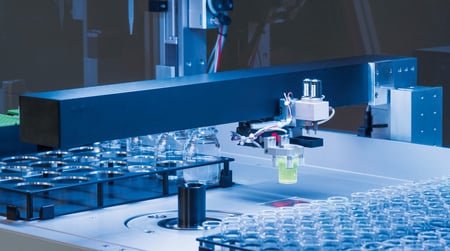
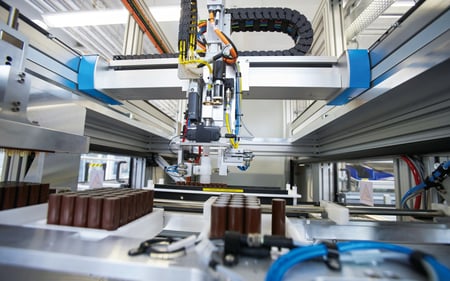
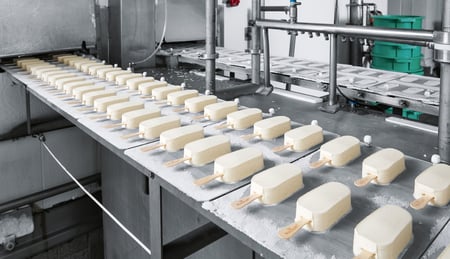
But, there’s more. Pneumatic actuators are part of most industries you experience. Here’s some other examples where you’ll find the pneumatic systems at work:
- Agriculture
- Automotive
- Laboring
- Packing
- Amusement Park Machines
- Coal Mining Equipment
- Textile Industry
- Bicycle Pumps at Home
But, there’s also many areas within the home that you’re probably unaware of, for example doors, lawn mowers, under-bed storage, air conditioning and more.
In a Nutshell
From the costs, through the safety aspects and on to the ease of operation, pneumatic actuators offer clear advantages in a wide range of applications across many industries. However, it is also important to note that it is not one size fits all.
Is Pneumatic Actuator the Right Fit for Your Application?
Let SLS help you to find the right solution! If you would like to know if pneumatic actuator is the right fit for your industry or application, please contact us today by clicking on the button below and our friendly engineers will get in touch with you:
 Festo is a global player and an independent family-owned company with its head- quarters in Esslingen am Neckar, Germany. The company has become the global market leader in its sector over the past 60 years thanks to its innovations and problem-solving competency, as well as a unique range of industrial training and vocational education programs. Festo supplies pneumatic and electric automation technology to 300,000 customers in the field of factory and process automation in over 35 industries.
Festo is a global player and an independent family-owned company with its head- quarters in Esslingen am Neckar, Germany. The company has become the global market leader in its sector over the past 60 years thanks to its innovations and problem-solving competency, as well as a unique range of industrial training and vocational education programs. Festo supplies pneumatic and electric automation technology to 300,000 customers in the field of factory and process automation in over 35 industries.
**All images were derived from Festo.com

